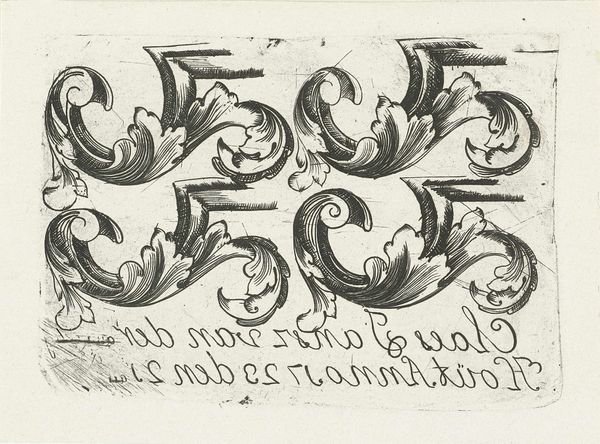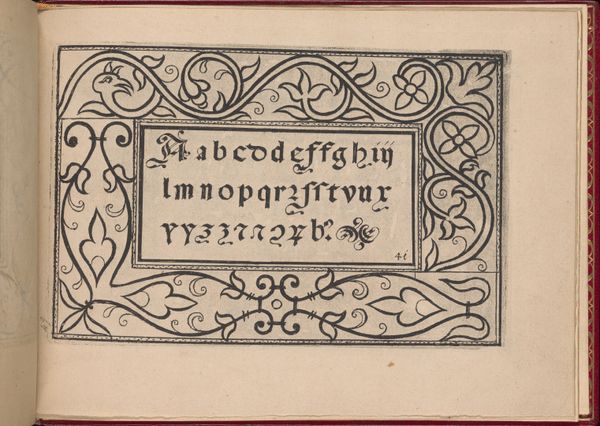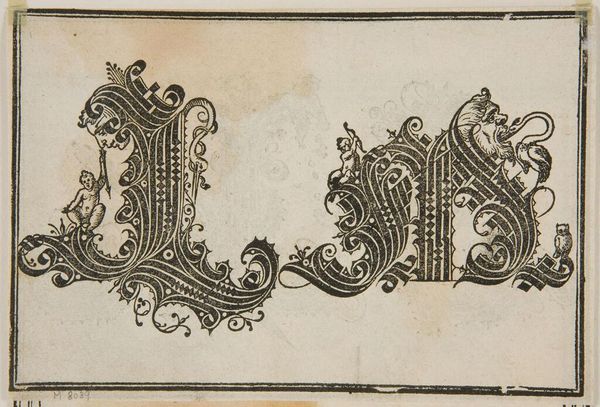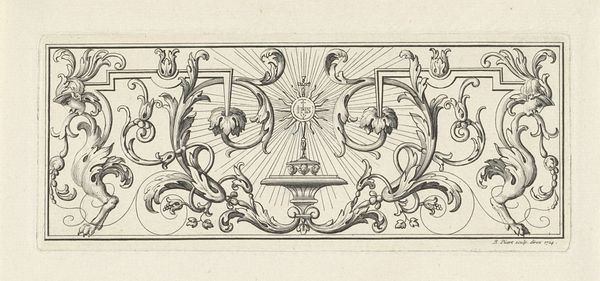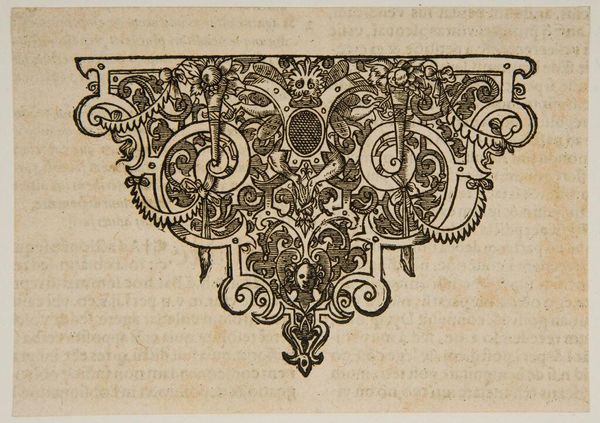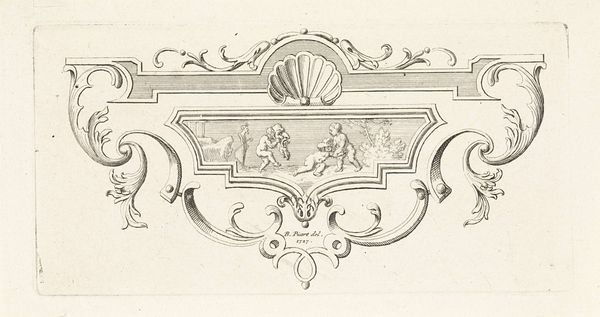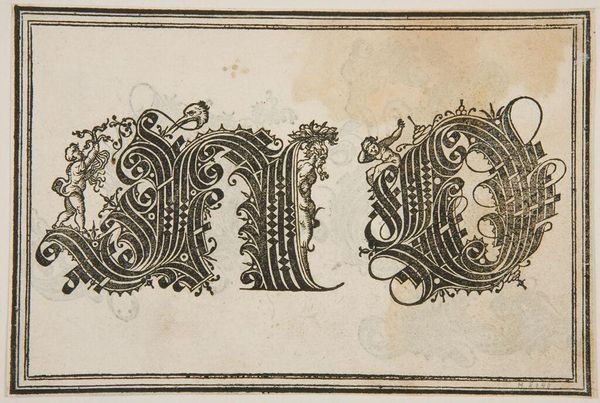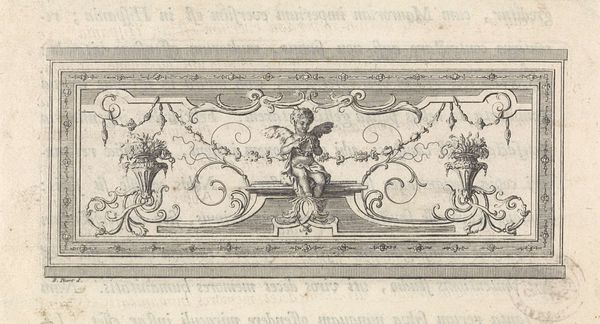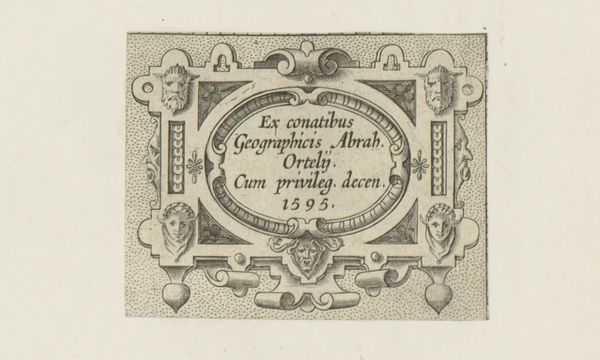
print, engraving
# print
#
pen sketch
#
old engraving style
#
11_renaissance
#
geometric
#
line
#
northern-renaissance
#
decorative-art
#
engraving
Dimensions: height 50 mm, width 134 mm
Copyright: Rijks Museum: Open Domain
Curator: Look at this intriguing piece, "Langwerpige cartouche met rolwerk," dating back to 1579. It's an engraving by an anonymous artist, showcasing the decorative arts prominent during the Renaissance. The details are amazing. Editor: It immediately strikes me as restrained, almost austere, despite its decorative nature. The precise lines and limited shading evoke a sense of formality and perhaps the restrictions placed on art during that period? Curator: Indeed, the formality is significant. The cartouche itself, designed as a frame for text, holds a vital symbolic role. It announces and contains knowledge. In many cultures, the act of framing, of bordering, gives emphasis and imbues meaning. Editor: I am thinking of that emphasis and questioning whose knowledge and meaning is being privileged here. Consider the cultural context; Europe was experiencing widespread religious and political upheaval. Could this ornate frame, this carefully controlled design, represent an attempt to impose order amidst that chaos? Curator: That is a really valid point, and one could also say, perhaps this careful attention to the detail also speaks of the emergence of humanism, and the belief in humanity's creative potential. Look at the geometric shapes—circles, curves—carefully balanced, and that recurring motif right in the middle – doesn't it suggest harmony, control over the natural world through intellect? Editor: Yes, but I can't divorce myself from the larger political picture. Northern Renaissance art frequently carries coded symbolism reflective of its socio-political climate, whether intentional or not. The very act of ornate design, particularly for the elite, also sets it apart from more vernacular, democratic forms of expression. I wonder who exactly the original audience was and who was excluded. Curator: Those considerations push the boundaries of the work further and are always important when discussing visual art. Considering how images can speak to multiple levels of cultural expression can open doors to understand history in much more intimate and nuanced ways. Editor: Agreed. Examining historical objects through an intersectional lens lets us question not just what we see, but who gets to see and interpret it, as we add another layer to our own cultural memory.
Comments
No comments
Be the first to comment and join the conversation on the ultimate creative platform.
